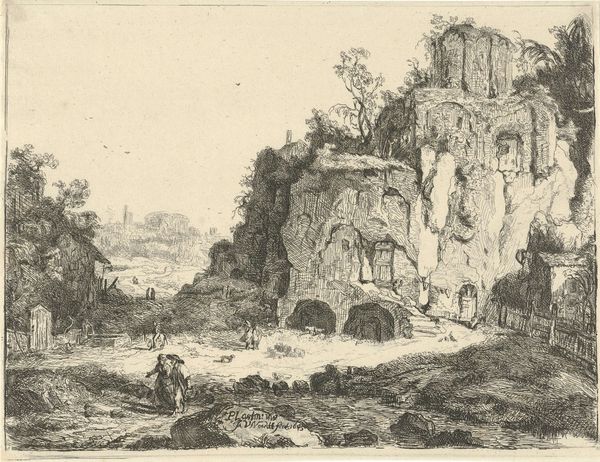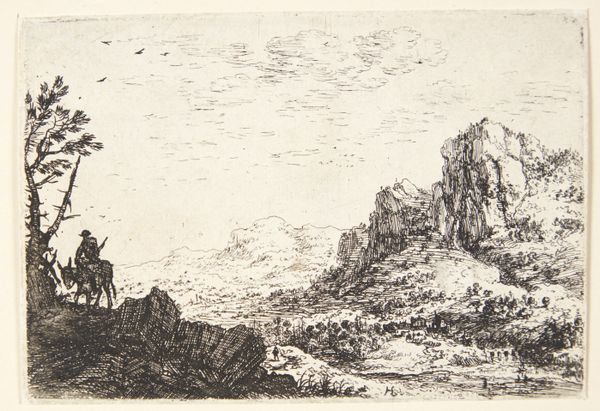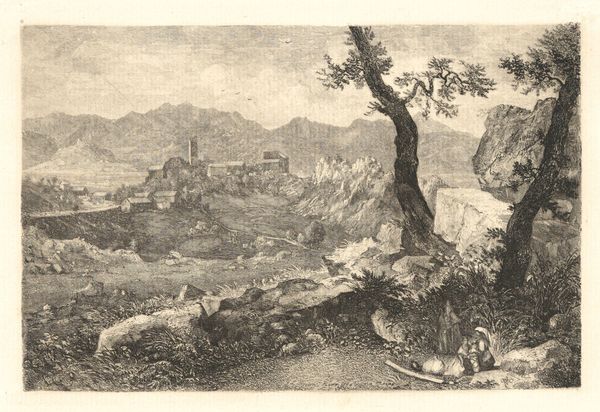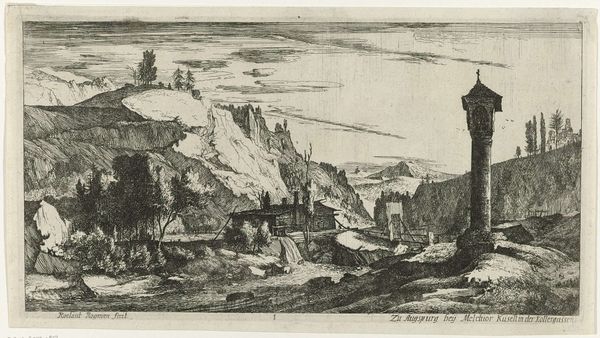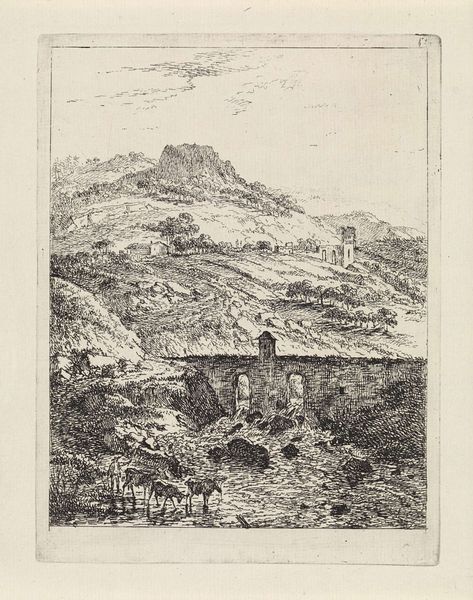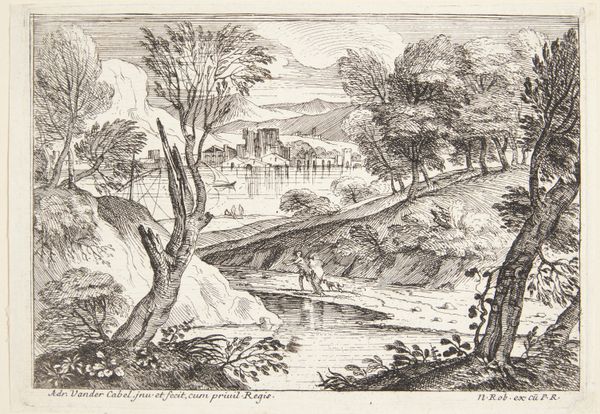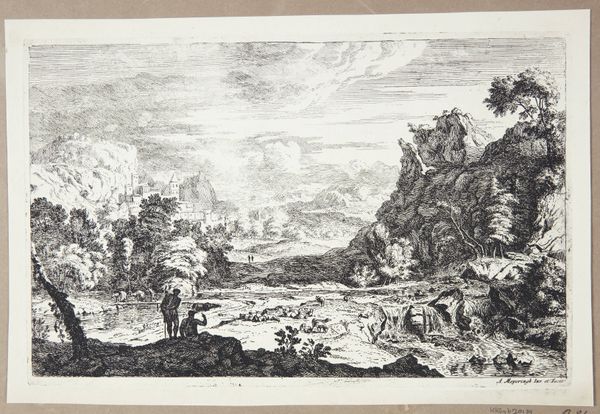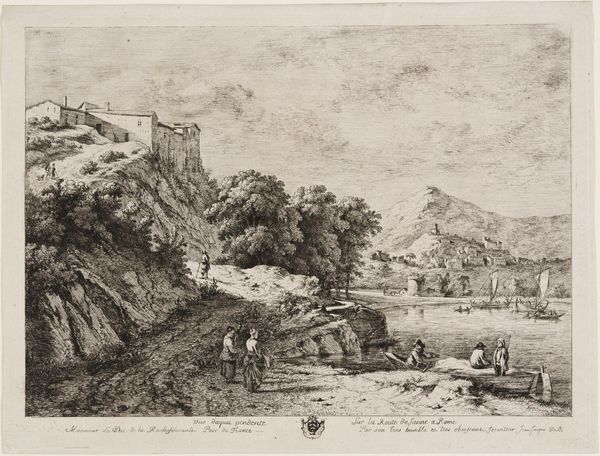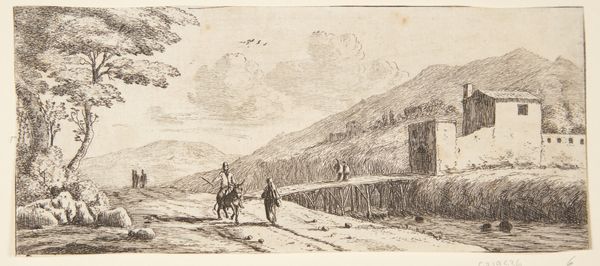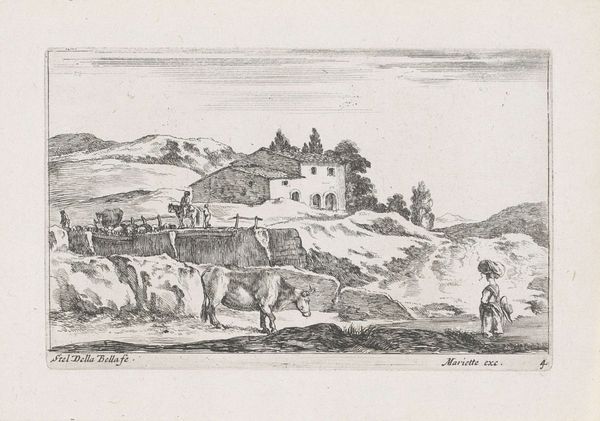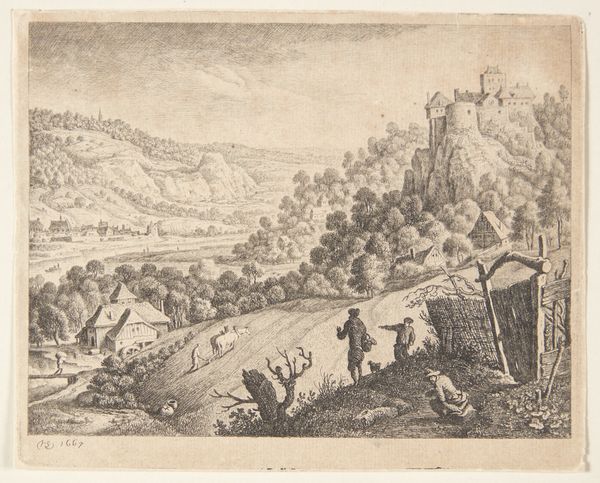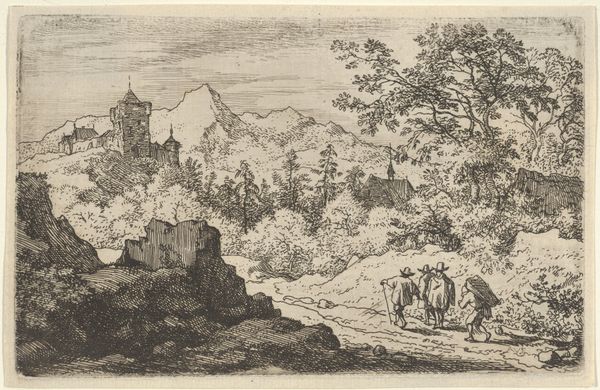
drawing, etching
#
drawing
#
ink drawing
#
baroque
#
etching
#
landscape
Dimensions: 59 mm (height) x 120 mm (width) (bladmaal)
Editor: Here we have Reinier Nooms' "Stenbrud mellem Belleville og Charonne," an etching from 1650. I'm immediately drawn to the contrast between the rough quarry and the fortified structure in the background. What story do you think this piece is telling? Curator: This piece, for me, speaks to the uneasy relationship between urban development and the natural world, and its effect on labor. Nooms depicts the transformation of the landscape by human hands, doesn't he? Consider who is laboring and who dwells in the heights. Editor: Right, I see the workers in the quarry now. So, you're saying the placement of the figures isn’t accidental? Curator: Precisely. Nooms highlights a social stratification inherent in the development of cities, using land and labor. We must also examine what gets sacrificed and extracted during times like these. Consider who benefits from it, and who carries the load. Editor: So it’s not just a pretty landscape. Curator: Not at all! How do you interpret the dilapidated nature of the quarry itself? Editor: I hadn’t considered that it was more than just scenery. The rocks almost look precarious; like things are falling apart... Curator: And whose labor went into extracting those stones? Nooms seems to be hinting at the cost – both human and environmental – of progress and the inequalities that were deepened in society in the name of progress. What could the image suggest about how progress changes landscapes as well as lives? Editor: I now see that Nooms is inviting us to question the true cost of these kinds of advancements, and for whose benefit this ‘progress’ really is. Thanks. Curator: And thank you. Art like this pushes us to confront uncomfortable truths about societal priorities then and even now.
Comments
No comments
Be the first to comment and join the conversation on the ultimate creative platform.
